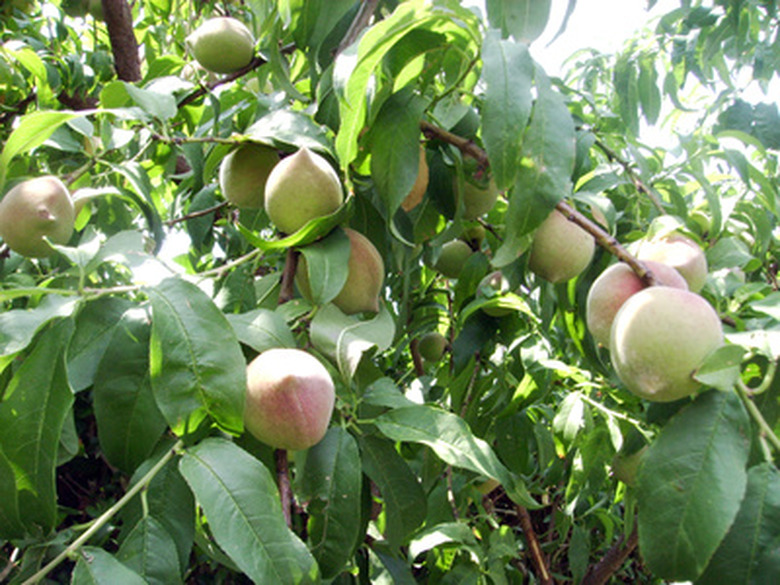How To Prune A Peach Tree In Texas
Things Needed
- Snub nose loppers
- Pruning hand saw
Peaches grow well in Texas and have been cultivated there successfully for more than 100 years, according to Texas A&M University. Peach trees grown in Texas require a dedicated plan of moderate, annual pruning. Since the trees produce fruit on young, 2-year-old wood, the older wood must constantly be removed to make way for the new. Without pruning, production of harvest-ready fruit declines, and the new fruiting wood that does grow is progressively higher in the canopy, making it difficult to manage and harvest. Conduct annual pruning in February just as the pink flower buds are swelling, but before they bloom in March.
Step 1
Prune away all shoots, root-stock suckers or water sprouts that emerge from the lower 3 feet of the tree trunk with your loppers. Place the cut flush with the trunk, removing all of the plant tissue past the bark. Prune away any dead, diseased, cracked, abrading or otherwise compromised branching down to the parent branch. Use your say or loppers to cut where the problem branch meets the healthy branch just outside the swollen branch collar.
- Peaches grow well in Texas and have been cultivated there successfully for more than 100 years, according to Texas A&M University.
- Without pruning, production of harvest-ready fruit declines, and the new fruiting wood that does grow is progressively higher in the canopy, making it difficult to manage and harvest.
Step 2
Cut away all the new, narrow-gauge shoots that are less than 12 inches in length that appear in the canopy above the 7-foot mark, using your loppers. Cut back to the parent branch just outside the slightly swollen branch collar. Leave all of the red, woody fruiting shoots that are 18 to 24 inches long, untouched.
Step 3
Prune away any branches, shoots or twigs that grow inward toward the trunk, so that all branches that remain are facing up and out. Cut down to the parent branch, just outside the branch collar using your loppers for small diameter wood and your pruning saw for larger diameter wood.
Step 4
Cut away all of the older, gray-colored branches that will no longer fruit, within the 3- to 7-foot swath of the tree where fruit harvests are focused. Use your pruning saw to place the cut down to the parent limb, just outside the swollen collar.
- Cut away all the new, narrow-gauge shoots that are less than 12 inches in length that appear in the canopy above the 7-foot mark, using your loppers.
